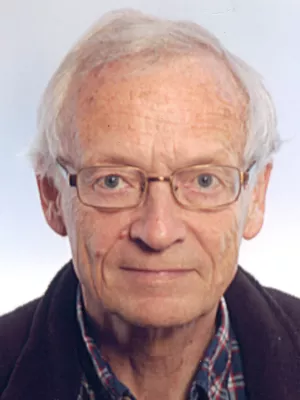
Torben Andersen
Professor emeritus (Leave of Absence)

Adaptive optics schemes for future extremely large telescopes
Author
Summary, in English
The adaptive optics for any telescope in the 25- to 100-m class will be complex. It is believed that adaptive optics should, to the maximum extent, be designed as an integrated part of a telescope. The proposed Swedish 50-m Extremely Large Telescope is considered here to illustrate the principle of integrated adaptive optics. Two alternative designs both using the Ritchey-Chretien telescope system and laser guide star (LGS) reference sources are presented. The first design employs trombone optics, which bring the laser guide star images back to the normal Ritchey-Chretien focal surface (referred to as the RC-focus) from the LGS focal surface (referred to as the LRC-focus), and a layer-oriented wavefront sensor system optically performing the averaging "shift and add" in the final focus. According to this procedure, sensed wavefronts are overlapped with a certain mutual shift and added for estimation of wavefront average slope values, resulting in actuator commands for driving the shape of the cleformable mirrors. The second design employs a numerical "shift and add" procedure and has two wavefront sensors. The first one performs LGS sensing in an intermediate focus (LRC-focus), giving the input data for an analytical algorithm for deriving the mirror deformations to correct for atmospheric turbulence. By using an artificial laser source at the intermediate focus, the shape of the second cleformable mirror is controlled by a second wavefront sensor in the final focus. The capability of the analytical algorithm to derive the mirror corrections from the measured wavefronts ensures proper functioning of the adaptive optics system. This system has a simpler optical design compared to the first design. (C) 2002 Society of Photo-Optical Instrumentation Engineers.
Department/s
- Lund Observatory - Undergoing reorganization
Publishing year
2002
Language
English
Pages
1065-1072
Publication/Series
Optical Engineering
Volume
41
Issue
5
Document type
Journal article
Publisher
SPIE
Topic
- Astronomy, Astrophysics and Cosmology
Keywords
- wavefront sensors
- adaptive optics
- telescopes
- optical systems
Status
Published
ISBN/ISSN/Other
- ISSN: 0091-3286

